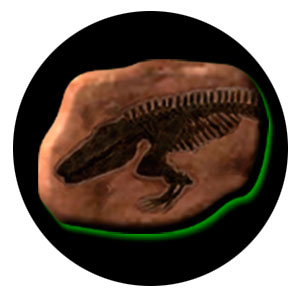
MENU

Fossils
The Missing Evidence
Lawrence Richards reminds us, “What is important about fossils is that fossils are the only possible real evidence to which evolutionists can turn to support their theory.”1 (emphasis added) If evolution were true, scientists would not have to argue over the appropriateness of a few questionable fossils as links between various groups of animals. Instead, paleontologists would be struggling to organize millions of fossil specimens. But evolutionists such as the senior paleontologist at the British Museum of Natural History, Colin Patterson, freely admit:
As a paleontologist myself, I am much occupied with the philosophical problems of identifying ancestral forms in the fossil record. You say that I should at least “show a photo of the fossil from which each type of organism was derived.” I will lay it on the line—there is not one such fossil for which one could make a watertight argument.2 (emphasis added)
Stephen J. Gould of Harvard University, one of today’s leading evolutionists, wrote in 1980, “The extreme rarity of transitional forms in the fossil record persists as the trade secret of paleontology.”3
“Trade secret”? Real science doesn’t keep secrets—it provides answers and information! In 1979, evolutionary paleontologist David Raup wrote:
Darwin . . . was embarrassed by the fossil record . . . . We are now about 120 years after Darwin and the knowledge of the fossil record has been greatly expanded. We now have a quarter of a million fossil species, but the situation hasn’t changed much . . . . We have fewer examples of evolutionary transitions than we had in Darwin’s time.4 (emphasis added)
Great Evidence For Creationism
On the other hand, the fossil record is in complete harmony with what scientists would expect to find if the entire world was at one time destroyed by an enormous flood. For example:
- All of the different kinds of animals are found fully formed and functional, with no evidence of linking from one kind to the next.
- Most fossils are found buried in sediments laid down by water in every part of the world.
- Most fossils had to be buried very rapidly to have been preserved.
- Animals that should not be found together in the same part of the world are found buried and jumbled together by the millions.5
Dr. Austin Clark, the curator of paleontology at the Smithsonian Institution, observed: “Thus, so far as concerns the major groups of animals, the creationists seem to have the better of the argument.”6
The fossil record also shows evidence that it was produced under catastrophic conditions. “Many of the world’s fossils show, by the [preservation of] details of their soft fleshy portions, that they were buried before they could decay. This, together with the occurrence of polystrate fossils (such as fossil trees that traverse two or more strata of sedimentary rock) in Carboniferous, Mesozoic, and Cenozoic formations, is unmistakable evidence that this sedimentary material was deposited rapidly—not over hundreds of millions of years.”7

“We have fewer examples of evolutionary
transitions than
we had in
Darwin’s time.”
Evolutionary paleontologist
David Raup
- Richards, Lawrence. It Couldn’t Just Happen. (Fort Worth, TX: Sweet Publishing, 1987), p. 83.
- Colin Patterson in a personal letter to Luther D. Sunderland (April 10, 1979) as quoted in Taylor, Paul S. The Illustrated Origins Answer Book (Mesa, Arizona: Films For Christ Association, 1989), p. 106.
- Gould, Natural History, Vol. 86, no. 5 (1977), p. 13., as quoted in Hanegraaff, Hank. The Face That Demonstrates the Farce of Evolution. (Nashville, TN: Word Publishing, 1998), p. 44.
- David M. Raup, “Conflicts Between Darwin and Paleontology,” Field Museum of Natural History, Vol. 50, No. 1 (January 1979), p. 22, as quoted in Taylor, p. 107.
- Richards, pp. 85-90.
- Austin Clark, “Animal Evolution,” 3 Quarterly Review of Biology, p. 539, as cited in Ankerberg, John and John Weldon. The Facts on Creation vs. Evolution. (Eugene, OR: Harvest House, 1993), p. 34.
- Brown, Walter T., Jr. In The Beginning. . . . (Naperville, IL: The Institute for Creation Research Midwest Center, 1981), p. 2.
Design, graphics and artwork copyright © 2016 Tim Beasley • All rights reserved.